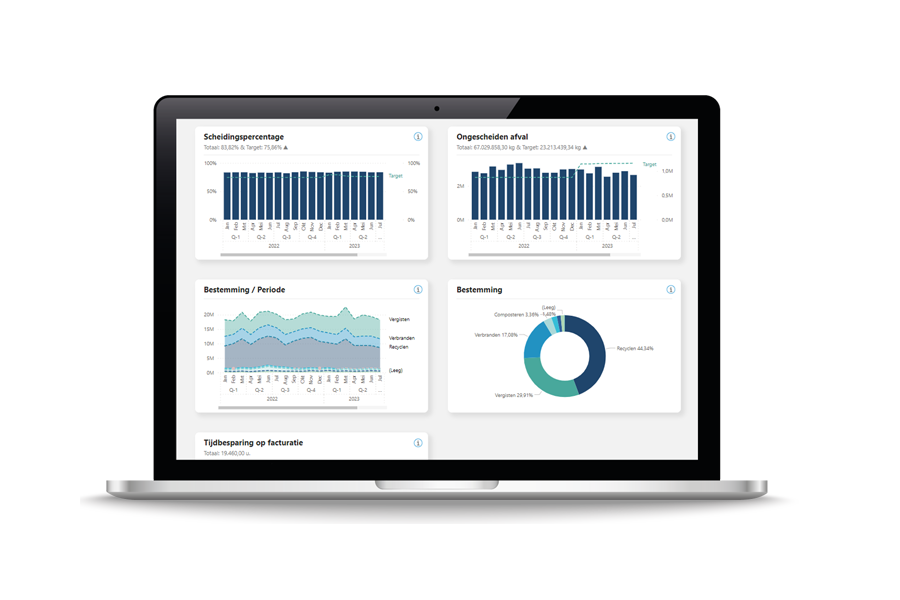In the European Union, 35 million tons of waste are generated each year as reparable goods are thrown away. This has a huge impact on the environment. But there is good news: the European Council and the European Parliament reached an agreement on the "right to repair" for consumers in February 2024.
As part of the European Green Deal, the Right to Repair law should lead to a reduction in waste and savings for consumers. That's why today we're zooming in on step 5 of the R-ladder: repair.
The Right to Repair Act
From 2026, the European ECGT Directive will ensure that companies can no longer make unsubstantiated sustainability claims. The introduction of this legislation should prevent greenwashing. At the same time, it forces companies to implement a more efficient, sustainable approach to raw materials. That's where Repair comes in.
A 2020 European survey found that as many as 77% of consumers would rather choose to have goods repaired than buy a new product. Yet the vast majority of products are replaced or even thrown away.
This is because repair is often much more expensive, compared to buying a new product. Often, repair services are also lacking. So the new legislation and consumers expect selling and manufacturing companies to offer repair options.
Repair and redesign
There is great potential in product design. Electronics are the fastest growing source of waste in the European Union. Some products, such as smartphones, are designed to fail over time. Disposal or replacement of specific parts is not possible in this process. Consumers are thus forced to buy a new product. The Repair Act will force manufacturers, among other things, to think more about the design and possibilities for repair (rethink).
What does the legislation mean?
The new European agreement should make it easier and cheaper to have defective products repaired. The Right to Repair law ensures that valuable raw materials remain longer in the chain.
Several measures are included in the law to promote repair and reuse of technically repairable products. Among other things, sellers will be obliged to offer repairs within the legal warranty period. Consumers are also given the right to request repairs for certain products outside the warranty period, such as washing machines, vacuum cleaners and bicycles. There are to be online platforms where consumers can find local repairers.
The benefits of repair
It is not for nothing that repair ranks a lot higher on the R ladder than a processing method such as recycling. Repair offers a number of significant benefits. By repairing products instead of throwing them away, we extend the life of raw materials. A crucial principle in the circular economy.
So this also means that fewer raw materials are needed to produce new goods. This saves us substantial costs and reduces the depletion of natural resources.

Recycling also brings products back into the chain, but requires much more energy. So does repair, but to a much lesser extent. By repairing we also preserve the original value of raw materials. And we save an energy, raw materials and costs. Products last longer and valuable resources are preserved for future generations.
Repair in practice
You probably quickly think of repairing electronic devices, but repair goes much further than that. Are you curious what repair can look like in practice? With some examples from our own practice we hope to clarify the concept. For example, pallets that would normally be thrown away are refurbished for reuse. And we maintain machines such as press containers properly and replace parts early to extend their life and prevent standstills.
Another striking example is a client who was dealing with a surplus of batteries. Thanks to our extensive network, we found a processor specialized in assessing the repair potential of these batteries. Now a significant portion of these surrendered batteries are successfully repaired. The batteries that are beyond repair are carefully dismantled for recycling.
Milgro and repair
Milgro emphasizes the importance of repair. From a waste management point of view, repair is not always the most obvious solution for a company. We also realize that repair is not always easy. Repair is sometimes labor intensive and efficiency is low because of small volumes. Yet repair offers opportunities:
- reduce emissions (in scope 3)
- increase or deepen customer engagement by providing a repair service
- reduce pressure on nature and biodiversity
No matter how complicated it may seem, Milgro likes to think along with you about repair possibilities within your company and supply chain. From our expertise we help you to reuse your repaired products or to find a market.
In addition, we are specialized in data. We calculate exactly how much your company saves with repair. And that's quite a lot. Repair is together with Reuse and Reduce the most impactful strategy to reduce emissions from waste. Milgro is happy to calculate the ecological and financial figures for you. These figures will show a positive result, both on impact (CO2) and euro (financial).
Our handy dashboard gives all our clients insight into all waste streams and processing methods. Should you opt for repair; you are guaranteed to see positive effects in the reports. Want to know more or get started with your waste streams and repair? Schedule an appointment with our consultants or book a demo of the Milgro dashboard. We'll get the coffee ready.
Stay informed
Stay up to date on all new developments? Follow us on LinkedIn or Instagram. Or subscribe to the newsletter. Are you curious about what Milgro can do for your operations and waste process? Contact us












